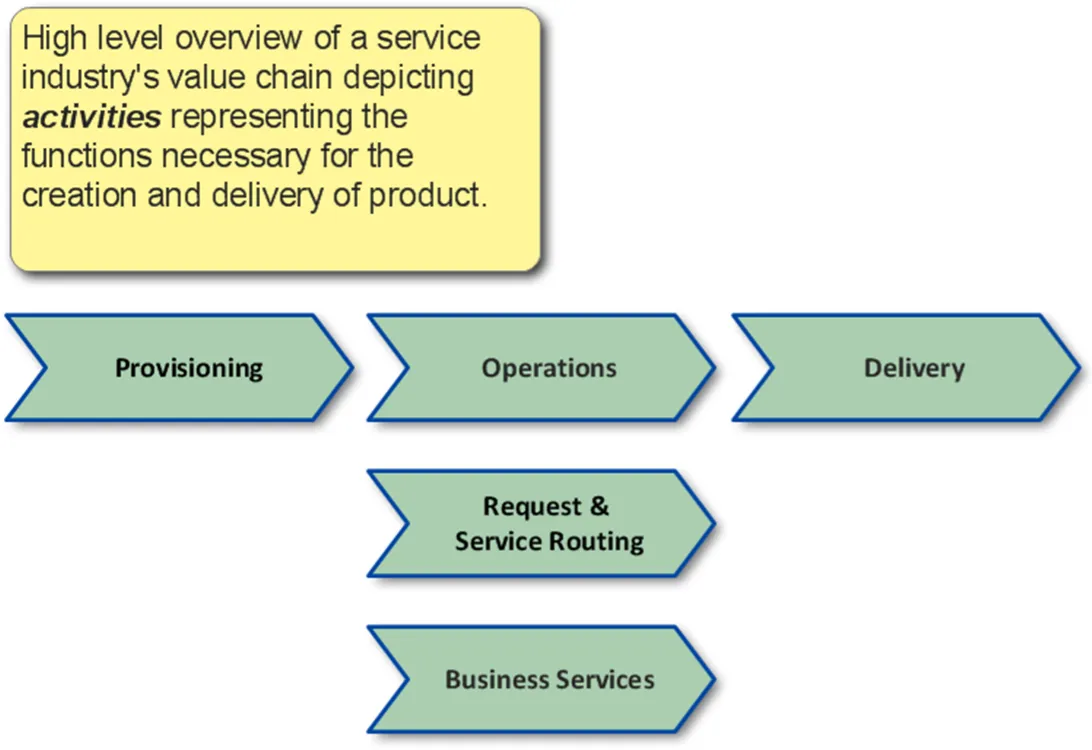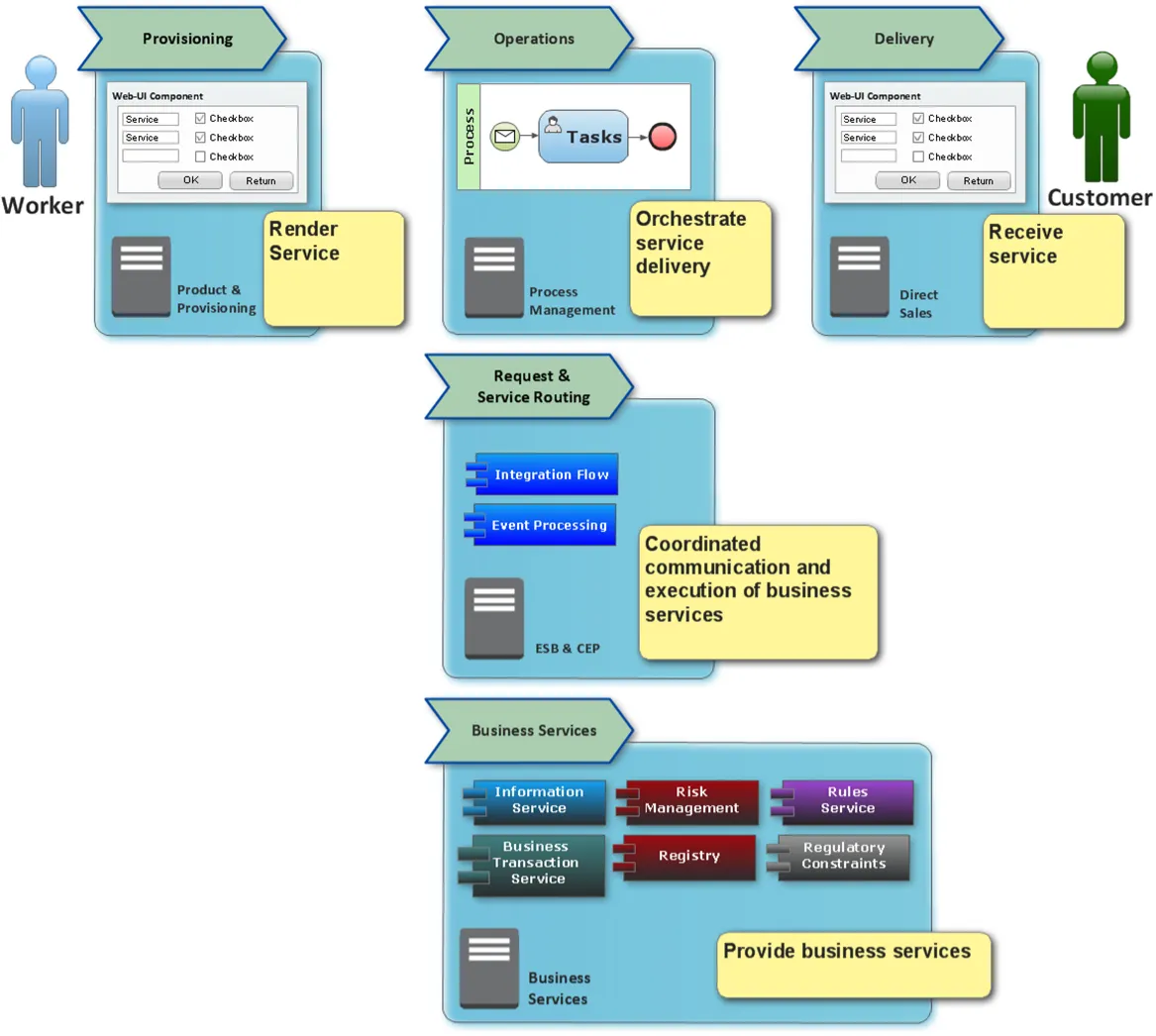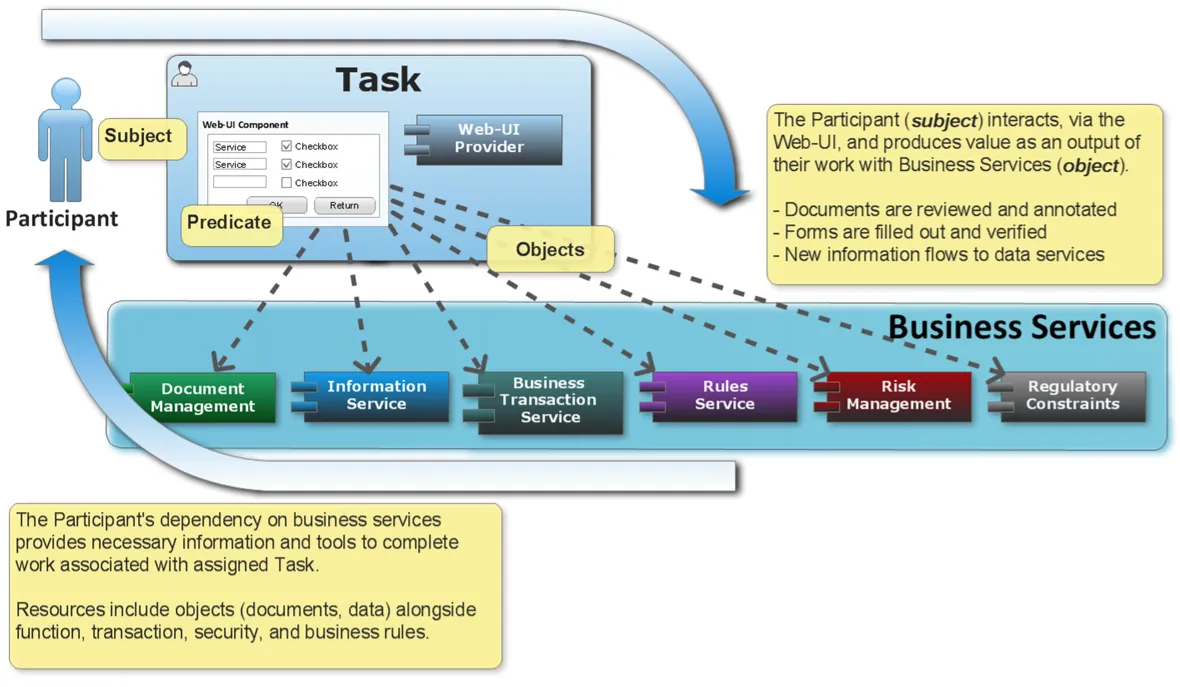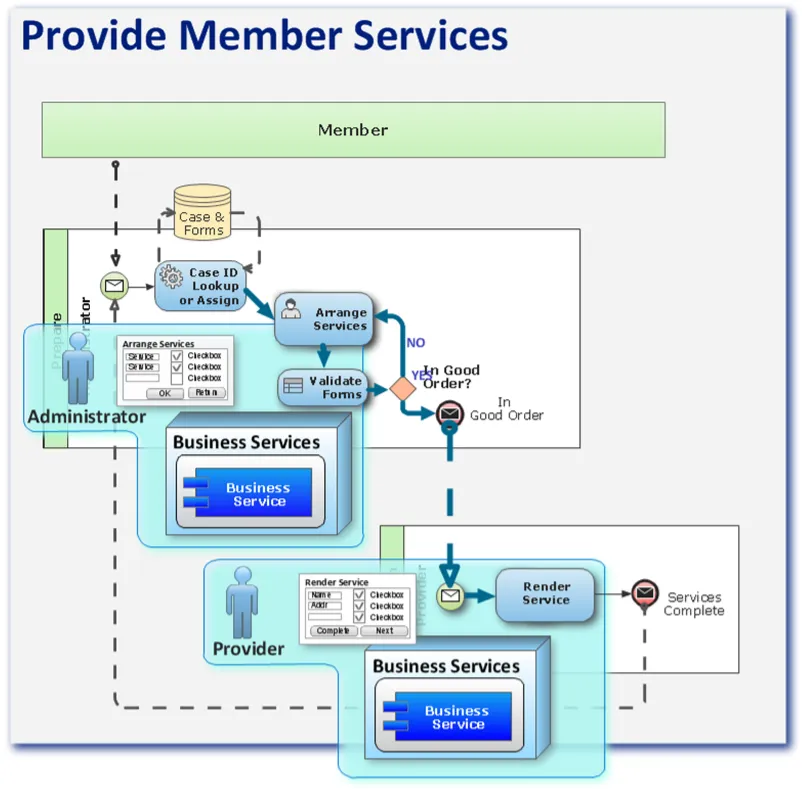The BPM Task Defined in Context
Blog: Gary Samuelson Information Systems Anatomy
Introduction
Carrying forward the definition listed in the overview:
A Task is a modeling element, from the BPMN/CMMN notation, representing a unit of work. The task also provides a container metaphor and classification for a group of one or more services (human and system) dedicated, from a valued output perspective, towards the completion of a dependent business process. The process model (from BPMN) defines the context and placement, via the task’s value-add dependency.
The BPMN 2 standard defines a Task and introduces the concept of activity (we’ll talk about Activity Theory later):
A task is an atomic Activity within a Process flow. A Task is used when the work in the Process cannot be broken down to a finer level of detail. Generally speaking, either a worker (human) or application (automation) perform necessary work representing the Task during execution. (omg.org BPMN 2.0.2)
If we compile and package the BPMN process model for run-time execution we extend the context of our definition:
A BPMN process model implementation (or execution) extends the meaning of “task” to provide a container metaphor and classification for a group of one or more dependent services (human and system) dedicated, from a valued output perspective, towards process completion.
Since “activity” is brought into the definition:
A process-oriented activity is an abstract type and, in context, implies work performed within a process and typically refers to one or more assigned tasks within an instance relationship with a worker (participant). Though the terms “task” and “activity” or often used synonymously they are not the same. A task is a unit of work (atomic) – an activity is work performed and includes one or more tasks.
Comparing Methods: Functional Decomposition versus Task Definition
A process-oriented task is not derived from the practice of “functional decomposition” (as a method of definition).
A business task definition does not originate as a product of classic business analysis or systems development. This is because these domains lack the concepts of human participation (activity theory) and measure (quantifying effort specifically as a “unit of work”).
Classic business and systems analysis typically lead to requirements definition which then define the need for and implementation of functional characteristics and behavior. However, a BPM process is not an application. And, delivering yet-another application does not represent a strategic advancement on the alignment of business assets towards superior value (BPM core value). An application cannot deliver real, ongoing competitive advantage.
A Review of Value-chain and BPM Methodologies
It’s important is to understand the differences between these methodologies and their contribution. Porter’s Value-chain doesn’t necessarily contradict BPM’s effort. These two perspectives are complimentary as long as their boundaries and analysis are both clearly understood and reasonably applied.
So, we’ll compare each with an approach towards a mixed application – each doing its part, as a methodology, towards delivering a complete solution.
Porter’s “value-chain” model for business-oriented functional decomposition:
Representing a value-add perspective of business activities within the organization’s networked, or linked, operations (Porter 1985).
Joan Magretta interprets value-chain for contemporary application:
Activities are discrete economic functions or processes, such as managing a supply chain, operating a sales force, developing products, or delivering them to the customer. An activity is usually a mix of people, technology, fixed assets, sometimes working capital, and various types of information (Magretta 2013).
This model representing a value-add perspective of business activities within the organization’s networked, or linked, operations.

This model representing a value-add perspective of business activities within the organization’s networked, or linked, operations.
Extending Porter’s model we apply the service-oriented construct in representing our activity as a single or orchestrated collection of technical services. In this model, business value is represented as managed system capabilities whereby, “each value chain is a use case of the services it uses” (Commins 2010). The operations business activity (value-chain function) includes “process management” because, as a service, it plays a supporting role in its defining use case.

Business value is represented as managed system capabilities whereby, “each value chain is a use case of the services it uses” (Commins 2010)
BPM Tasks & Their Subject-object Relationship:
In contrast to Porter’s Activity, as linked operations, a BPM Task (or BPM Activity) has its focus on measured work-output as value received from either genesis or state change within represented business objects. Porter’s Activity doesn’t necessarily include Worker/Task participation whereas this relationship is vital to our BPM Task implementation.
In context to a BPM process model, a Task’s work output is measured as the value received. The necessary effort required to produce this value marks the task’s beginning and end. And, given need for quality and efficiency alongside speed, our scope includes any resources the participant requires to complete this task.

Work output is measured as the value received from either the genesis or state change in business objects.
BPM Task Participation within a Service Oriented Architecture (SOA)
In this model we combine Task, Process, and Service models into a holistic view representing our process-oriented architecture.
Web-UI and Business Services are identified and aligned to task and process requirements. Our goal being the development of loosely coupled service components across applications.

Web-UI and Business Services identified and aligned to task and process requirements.
References:
Cummins, Fred A. (2010) Building the agile enterprise: with SOA, BPM and MBM. Morgan Kaufmann.
Porter ME (1985) Competitive advantage: creating and sustaining superior performance. Free Press, New York
Magretta, Joan (2013). Understanding Michael Porter: the essential guide to competition and strategy. Harvard Business Press